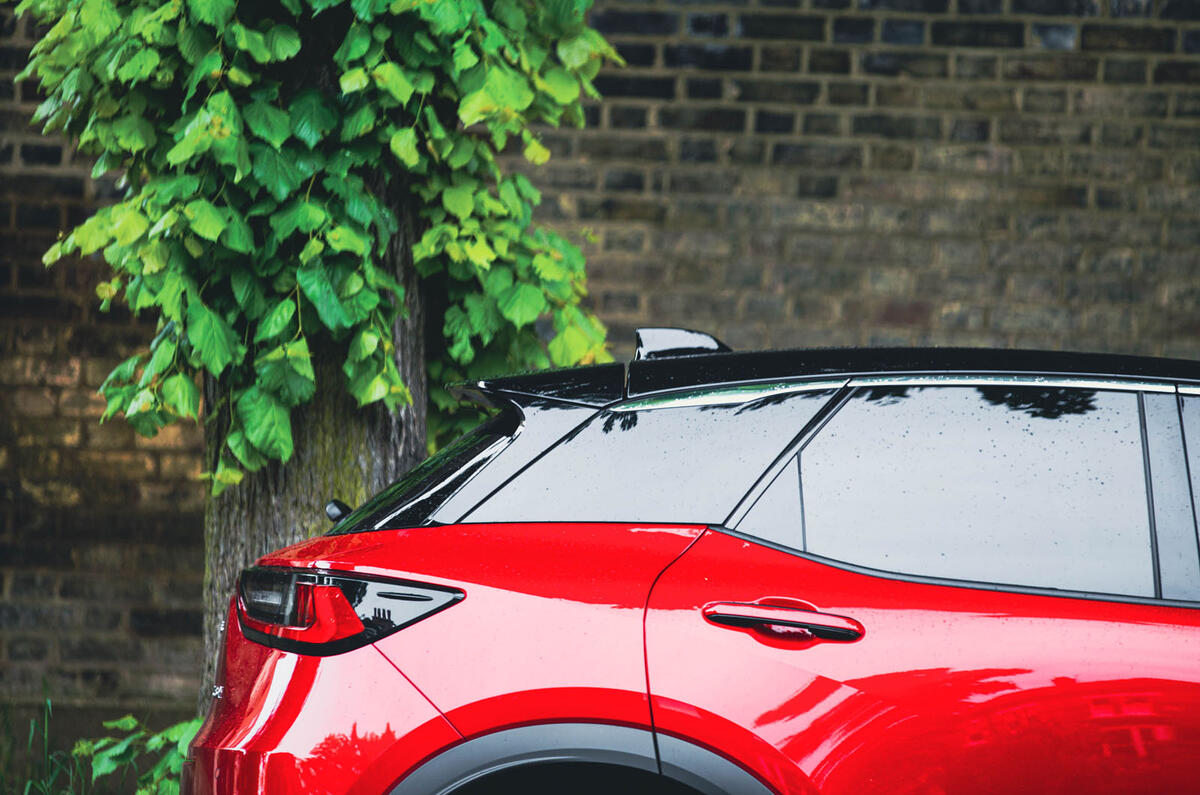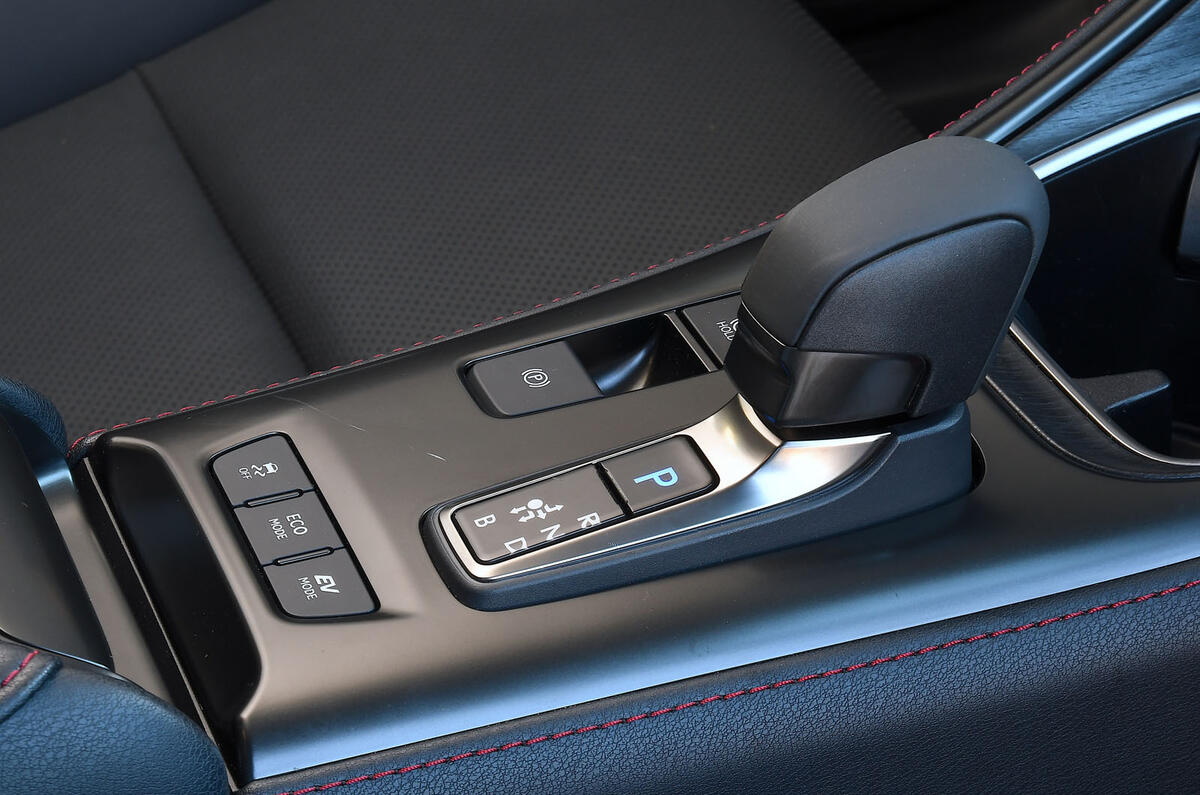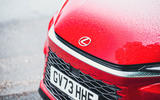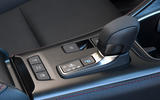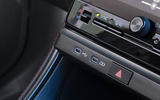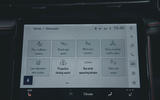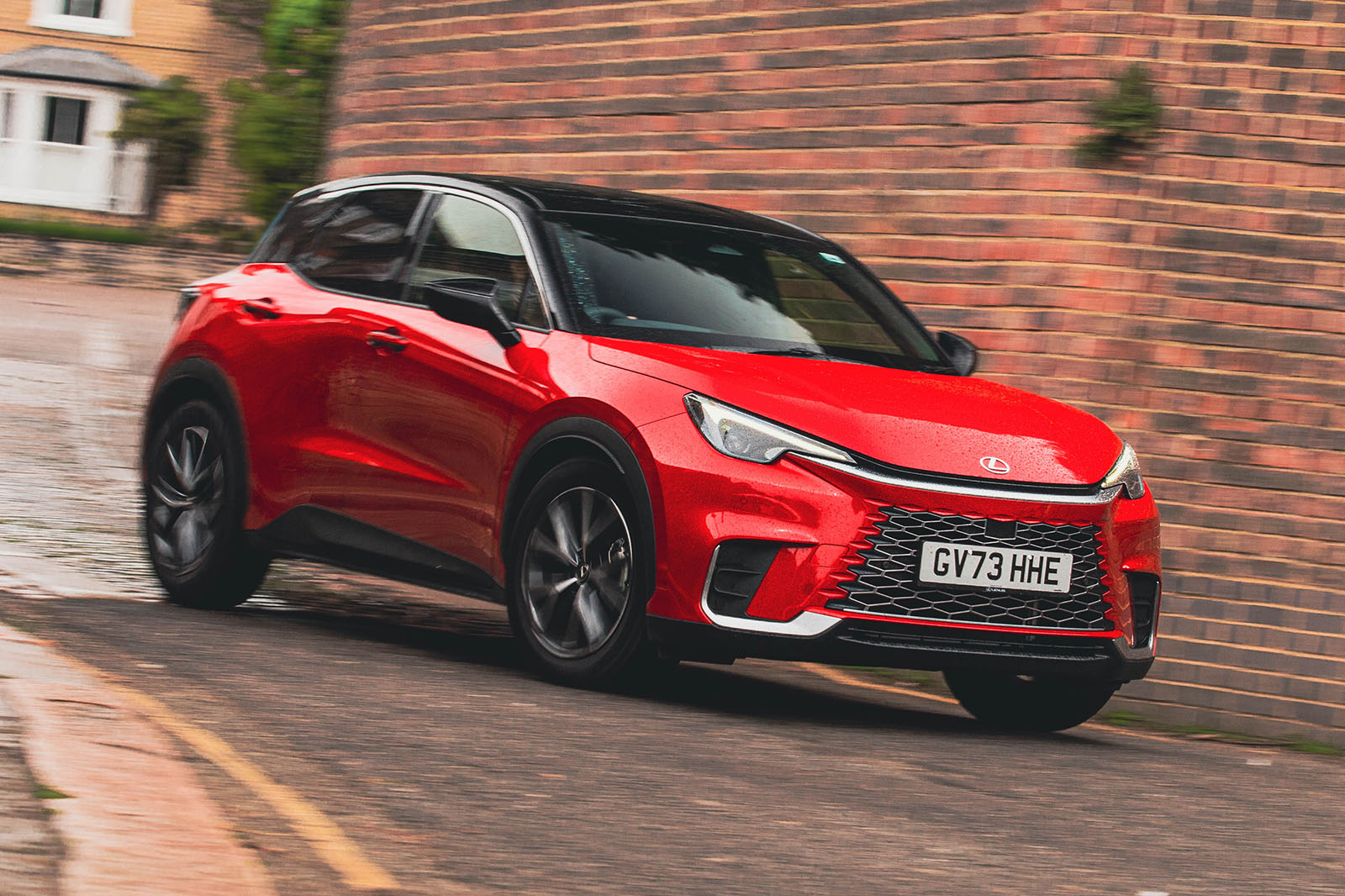The first thing you notice when you open the door to the LBX is that Lexus has absolutely succeeded in making the interior feel very upmarket, just shrunken down from, say, the Lexus RX.
The design is restrained and modern but not reductionist and simplistic like a Tesla or a recent Range Rover, while the materials are appealing, with copious soft-touch synthetic leather that’s indistinguishable from the real thing. The 9.8in touchscreen doesn’t dominate because it is nicely integrated into the dashboard architecture and there’s a fair selection of physical buttons, such as for the temperature, driving mode and auto hold. Some climate controls are accessed via the screen, but they are displayed permanently.
If this were a more typical Lexus, one might take issue with the slightly insubstantial temperature rockers and the satin metal-effect plastic centre console, but the feel of the LBX’s interior still seems like a cut above what you would find in the (larger, more expensive) Cupra Formentor or Mercedes-Benz GLA.
The ‘shrunken-down’ aspect is equally significant. The LBX’s calibre of plush materials causes some sort of cognitive dissonance with the narrow centre console and how close you are to your passenger. You do get used to it because it is simply a function of the car’s exterior dimensions, as is the slight shortage of passenger space. Taller testers had to slide the driver’s seat all the way back to get comfortable, which precludes anyone other than small children sitting in the back. But to regard this as a major failing of the LBX would be to miss the point of a deliberately small car. The boot, on the other hand, is surprisingly deep.
While the LBX offers a mostly convincing luxury car experience, it falters with some unnecessarily annoying tech. First up are the nannying bings and bongs to warn you of various things one shouldn’t need to be warned about. Do you really need to be reminded that the door is open or that there might be someone on the rear seat? Pressing ‘agree’ or ‘not agree’ to some legal verbiage every single time you start the car gets tiresome as well.
The ‘touch tracer’ steering wheel buttons (on Premium Plus trim and up) were likewise found to be a little annoying, at least by some of our testers. The idea makes sense: they are unmarked but configurable, and when you touch them, a legend pops up in the gauge cluster or head-up display. You can also switch between two presets for each side using the button underneath.
In practice, however, the limited choices you get for mapping them are not very useful, and the standard selection is poorly thought out: when using cruise control, you are locked out of switching the display layout. The buttons are also not very responsive and usually require multiple presses to engage.
Multimedia system
The LBX uses the same multimedia as other recent Lexus and Toyota models. It’s a fairly rudimentary interface that works well in a Yaris but doesn’t feel entirely appropriate for a luxury car. Unlike in a Mercedes-Benz or Genesis (where the system does share its bones with cheaper Kias), the interface, fonts and functionality don’t feel like an extension of the Lexus brand.
You might simply default to Apple CarPlay or Android Auto (the latter requires a cable), but this presents issues as well. You always need to agree or disagree to terms and conditions first and, due to the lack of a permanent home button or shortcut bar, exiting CarPlay to adjust the car’s settings is cumbersome.
If you do choose to use the native interface, the menus are logical enough and respond quickly. However, the native navigation system isn’t particularly clear.
The six-speaker sound system that was standard on our Premium Plus Design test car sounded mostly unremarkable. A 13-speaker Mark Levinson system comes on Takumi trim and up.









